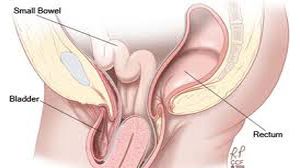Endocatch Single Use Specimen Retrieval Bag: A Must-Have Tool for Laparoscopic Surgery.
Add to
Share
2,609 views
Report
1 year ago
Description
The Endocatch single-use specimen retrieval bag is an essential tool for laparoscopic surgery that enables safe and efficient removal of tissue specimens from the body during surgical procedures. Designed to provide maximum safety and ease of use, the Endocatch bag is made of lightweight and durable materials that can withstand the rigors of surgical procedures. The Endocatch bag is designed to be used in laparoscopic procedures where specimens need to be removed from the body without the risk of contaminating the surrounding tissues or organs. It is a sterile, single-use device that can be easily opened and positioned within the surgical field using standard laparoscopic instruments. The bag is designed to hold specimens securely, preventing the tissue from falling out or getting damaged during the retrieval process. The bag is also designed to minimize the risk of spillage or contamination of the surgical site, reducing the risk of complications and improving patient outcomes. The Endocatch bag is compatible with most standard laparoscopic instruments, including graspers and scissors, making it easy to use with existing surgical equipment. Its compact design also ensures that it can be used in tight spaces, making it an ideal tool for laparoscopic surgery in areas where access is limited. Overall, the Endocatch single-use specimen retrieval bag is an indispensable tool for laparoscopic surgeons, offering a safe and efficient way to remove specimens from the body during surgical procedures. Its ease of use, compatibility with standard laparoscopic instruments, and its ability to prevent contamination and minimize the risk of complications make it a must-have tool for laparoscopic surgery. The Endocatch Single Use Specimen Retrieval Bag is an essential tool used in laparoscopic surgery for the retrieval of specimens during minimally invasive surgical procedures. This product is specifically designed for use in laparoscopic procedures where tissue specimens need to be removed from the abdominal cavity without contamination or damage to the surrounding tissues. The Endocatch bag is made of a strong and durable material that can withstand the pressures and forces of the laparoscopic environment. The bag is designed to securely hold tissue specimens, preventing contamination and damage to the surrounding tissues. This minimizes the risk of postoperative complications and ensures the safe removal of tissue specimens during surgery. One of the key features of the Endocatch bag is its ease of use. The bag is designed to be inserted into the abdominal cavity through a small incision, which minimizes the risk of infection and reduces the recovery time for the patient. Once inside the cavity, the bag can be opened and the tissue specimen can be safely placed inside. The bag is then easily removed from the abdominal cavity through the same small incision. The Endocatch Single Use Specimen Retrieval Bag is a must-have tool for laparoscopic surgery. Its strong and durable material, along with its ease of use, ensures the safe removal of tissue specimens during minimally invasive surgical procedures. This product has been extensively tested and has proven to be reliable and effective in a wide range of surgical procedures. In addition to its functional benefits, the Endocatch bag is also cost-effective. As a single-use product, it eliminates the need for costly sterilization and cleaning procedures. This not only saves time and money for the hospital or surgical center but also reduces the risk of cross-contamination between patients. Overall, the Endocatch Single Use Specimen Retrieval Bag is an essential tool for laparoscopic surgery. Its ease of use, reliability, and cost-effectiveness make it a must-have product for any surgical center or hospital that performs minimally invasive surgical procedures. By using this product, surgeons can ensure the safe removal of tissue specimens, minimizing the risk of postoperative complications and improving patient outcomes.
Similar Videos






